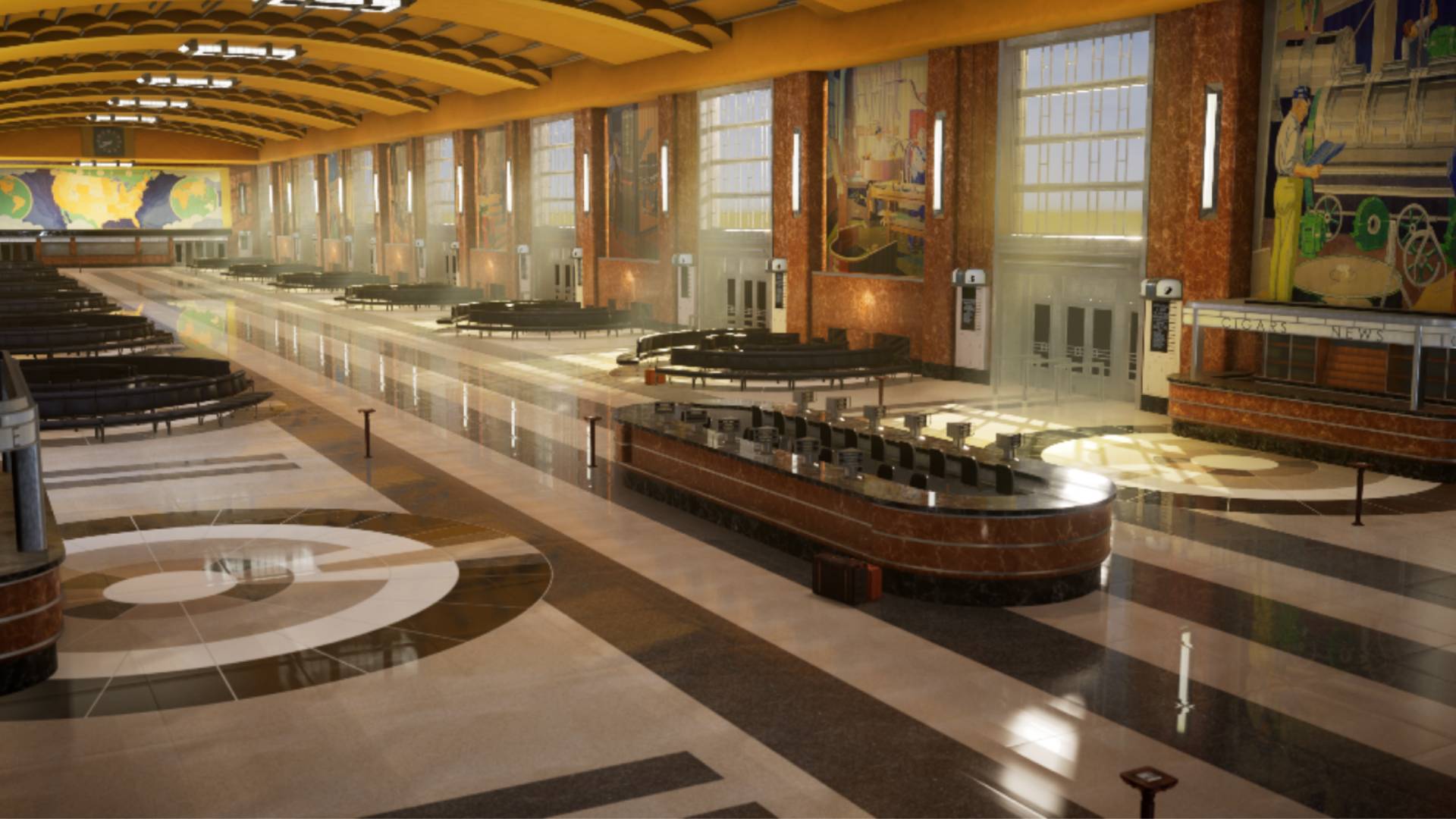Role: 3D Optimization & VR Developer
Tools Used: Unreal Engine, 3ds Max, Blueprints, VR Interaction Systems
Focus: Real-Time Optimization, VR Integration, Interaction Design
Project Background
Cincinnati Union Terminal is one of the last grand train stations built in the United States and is widely celebrated as a masterpiece of Art Deco architecture. Opened in 1933, the terminal became a central transportation hub, especially during World War II, when it processed up to 34,000 troops per day.
One of its most iconic and now-lost features was the 450-foot-long train concourse, which connected to 16 tracks and included ticket counters, murals, shops, and waiting areas. The concourse was demolished in 1974 as rail travel declined and the station closed to passenger trains. For decades, the only remaining visual records were archival photographs—until 2017, when Kinetic Vision led an effort to reconstruct the concourse in virtual reality using original references and models.
My Role & Contributions
I was brought onto the project to help translate a historically accurate 3D model of the concourse into a fully interactive, performant VR experience:
-
Mesh Optimization:
The original 3D assets—designed for still rendering—were not suitable for real-time use. I optimized all geometry in 3ds Max, reducing polygon counts, cleaning up topology, and reworking materials while preserving historical accuracy. -
Unreal Engine Integration:
Imported and assembled the entire scene in Unreal Engine, adjusting scale, lighting, and materials to match the original architectural intent. -
VR Performance Tuning:
Optimized assets and level streaming for smooth performance in VR, including lightmap baking, LOD setup, collision simplification, and efficient material use. -
Blueprint-Based Interaction:
Designed VR interactions using Unreal’s Blueprint system, enabling users to engage with specific areas of the concourse—like murals, shops, and seating areas—to learn more about their history and significance.
Outcome
The resulting VR experience allows anyone to step into a faithful digital recreation of the Union Terminal concourse—lost to demolition for over 40 years. With historically accurate details, intuitive interactions, and a high-performance VR environment, the project preserves a vital piece of American architectural and cultural history for education and exploration.
